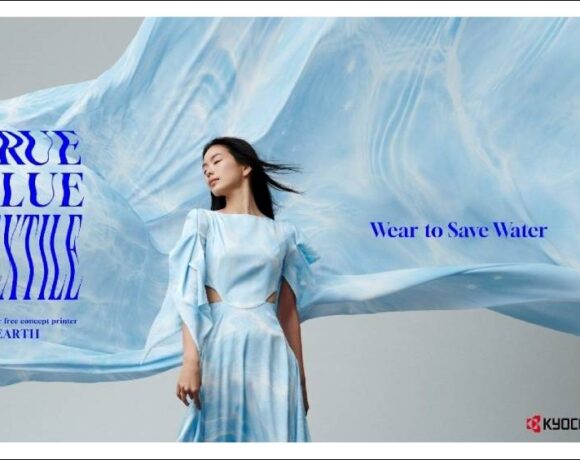Sustainability In Textiles: Fast Fashion Vs Slow Fashion

Murugan Santhanam
“Why do we face such a sluggish market?” Today, this is the million-dollar question for all the stakeholders in the textile industry.
You would never miss a single textile industry person asking the above question first before moving on to the usual conversation.
I, too, have been asked this question myself by various types of stakeholders, from spinners to machinery manufacturers and even consumable suppliers, whenever I meet them.
My answer to them is always the same: “Wait! Everything will be okay soon! It’s a kind of automatic correction between demand and supply.”
Then, the inevitable question comes up: “When will that happen?” Everyone, including myself, is eager to find the magical crystal ball that will tell us exactly when we will start sailing smoothly again.
Although we attribute some of the reasons for this sluggish demand to the Ukraine-Russia war and inflation in high-income countries, I believe that this is a recurring problem.
The fundamental question we should ask ourselves is: Do we produce exactly what the world needs?
According to the World Economic Forum, the global textile and apparel industry produces about 100 billion garments per year. That’s about 12.5 garments per person per year. However, only 60 billion of those are actually sold. So, on an average, a global citizen buys around 7 garments per year (Frankly, I certainly don’t buy that many garments per year!).
So, this means that there is surplus production of about 40 billion garments each year.
The consumption of 60 billion garments does not necessarily mean that we actually need them. We buy more garments than we actually need to replace worn-out and outgrown garments. Our buying behaviour is often influenced by a variety of psychological, cultural, and social factors. Some of these factors are:
- We buy garments to keep up with fashion trends and to satisfy our desire to look stylish and fashionable.
- We buy garments due to social pressure, feeling the need to have a diverse wardrobe to fit different occasions or to avoid wearing the same outfit too often.
- We buy garments for emotional gratification, as buying new clothes gives us a sense of pleasure and satisfaction and boosts our self-esteem.
- We buy garments due to our cultural norms and rituals, which often involve wearing new clothes during special occasions and festivals.
You know what? The silent driver of most of the above factors is fast fashion.
Fast Fashion: It is a business model that emphasizes producing trendy and inexpensive clothing quickly to meet consumer demand for the latest styles.
This model has led to an oversupply of garments, as well as a culture of disposable fashion. As a result, many garments end up in landfills or incinerators, even though they are still in good condition.
The overproduction of textiles has a number of negative consequences. It contributes to environmental problems, such as water pollution and air pollution.
Slow fashion: As a response to the rise of fast fashion, the concept of SLOW FASHION (a perfect antonym to ‘Fast fashion’!) began to take shape in the late 20th century.
Slow fashion emphasizes the production of high-quality, durable garments that are designed to last longer. That means the designs do not go out of style so quickly.
Slow fashion brands often use eco-friendly and sustainable materials, such as organic cotton, hemp, Tencel and recycled fabrics. The goal is to reduce the environmental impact of production and minimize the use of harmful chemicals.
Overall, slow fashion focuses on sustainability, ethical practices, and reducing the environmental impact of the clothing industry. It encourages consumers and fashion brands to shift away from the fast-paced, disposable nature of mainstream fashion and instead embrace a more mindful and thoughtful approach to clothing production and consumption.
So, which one should we follow?
Now that we understand the difference between fast fashion and slow fashion, the next question for textile business owners is whether they can run their business sustainably and provide sustainability to textiles.
The answer is not as simple as “fast fashion” or “slow fashion.” The best approach for textile units will depend on a variety of factors, including their target market, their production capabilities and their financial resources.
In my experience, slow fashion is like value addition. Slow fashion often caters to a niche market of conscious consumers who are willing to pay a premium for sustainable and high-quality products. People don’t mind buying more as the slow fashion offers diverse products. So, there would be considerable constant demand without much variation like what we experience now, which will pave the way for a sustainable business.
Every textile unit should have a certain percentage of its capacity allocated to these value-added items. Starting with a minimum of 10% of its capacity, the unit can gradually increase the capacity for these value-added items as demand for them picks up. This is a kind of product mix.
Frankly, this is the successful formula that we implemented two decades ago in the mill where I worked previously. Today, that unit produces mostly value-added items and there is no grumbling about the bad market situation even today!
(Murugan Santhanam is the Managing Director of Texdoc Online Solution Pvt. Ltd.)














